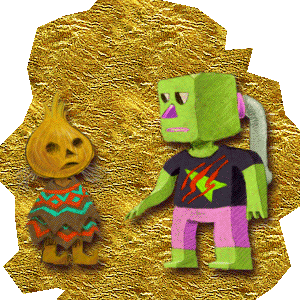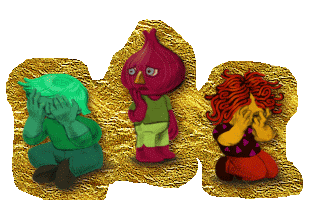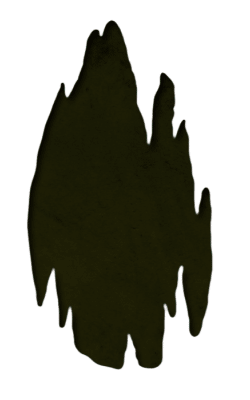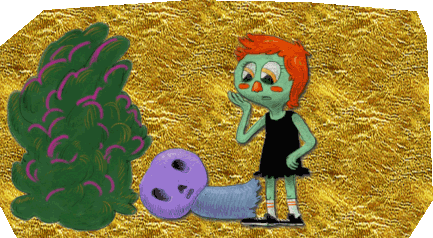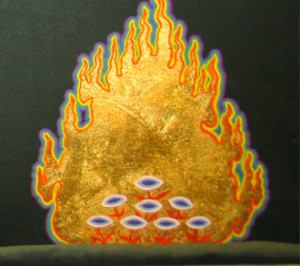
The development of creativity is frequently cited in literature regarding arts education and arts integration, and is often used as a justification for the arts’ inclusion in proposed education policy (President’s Committee on the Arts and the Humanities [PCAH], 2011; Wisconsin Task Force on Arts and Creativity in Education [WTACE], 2009). Advocates calling for increased arts funding, or against cutting arts funding, also invoke the importance of creativity in their arguments (Root-Bernstein & Root-Bernstein, 2011).
With creativity being touted as an important workplace and industry skill by authors like Daniel Pink (2005) and groups like the Partnership for 21st-Century Skills [P21] (2010a, 2010b), it has become an invaluable ‘instrumental argument’ for justifying Arts Education in terms of practical outcomes and career success. Arguments linking art education to creativity have an understandable attraction in a time when other instrumental arguments have come under scrutiny. For instance, in their meta-analyses of data on cognitive transfer in the arts, Hetland and Winner (2004) found no support for instrumental claims of arts-rich education improving verbal and math achievement. In today’s results-focused educational climate, linking arts to viable creative workplace skills has become a popular strategy for policy advocates in lieu of linking the arts to improved test scores in academic subjects (Galligan, 2001; PCAH, 2001; Root-Bernstein & Root-Bernstein, 2011; WTACE, 2009).
However, the PCAH (2011) has noted that while it is generally accepted that art education improves students’ creativity, there is little credible evidence or definitive information to cite in support of this connection. In light of this admission, those of us advocating for arts integration in schools, or organizing arts integration programs, must think critically about the role the arts and creativity play in an integrated curriculum, and not take as granted an identity between the two concepts.
We must ask ourselves: How exactly does our plan define ‘creativity’? What is the relationship between creativity and arts education? And, is the ultimate goal of integration a more creative student or a more artistic one?
Coming to a Definition of Creativity
A wealth of cognitive, theoretical, and policy definitions for creativity are to be found in the literature. While contemporary definitions offered by cognitive psychology and postmodern theory may differ in many respects, both challenge the “romantic modernist concept of creativity as a magical process of self-expression carried out by an isolated individual, and suggest that creativity exists in its cultural context, often entailing recycling, appropriation, reframing or adapting existing ideas to new concepts” (Marshall, 2005, p.228). The notion of creativity as an indefinable, magical, source of pure expression to which the child is privy is not only impractical from a position of outlining curriculum and policy, but also “trivialize[s] the intellectual and affective meanings of children’s multi-modal making as a social practice” (McClure, 2011, p. 128).
Nicole Gnezda (2011) outlined the cognitive stages of the creative process, describing a period of low neural arousal during which associative connections are made, followed by a sharp high-arousal moment of “illumination” when a new concept is formed. After this enjoyable “a-ha” moment there follows a period of intense left-hemisphere critical thinking and problem-solving to realize the idea.
Assessors of the Torrance Test of Creative Thinking have broadly noticed two types of creative thinker: “One type was people who produced quick and novel responses and did better on fluency and originality; the other was people who were detailed and deep thinkers and did better on elaboration and abstractness of titles” (Kim, 2006, p.462). “Innovators” create change by challenging current paradigms, while “adaptors” create change from within the existing paradigm (Kim, 2006).
“Divergent thinking [DT],” the ability to generate many unique ideas, is often cited as a central component of creativity (Bronson, 2010; Furnham et al., 2011; Grey, 2010 ; PCAH, 2011). However, while some researchers observe a strong correlation between DT and actual creative performance, others find no relationship between the two, and most researchers use multiple methods of measuring creativity, in addition to DT, in their studies (Furnham et al., 2011).
Sternberg and Williams (1996) outline three areas of thinking that contribute to creativity: synthetic ability, which is similar to DT, analytic ability, which is critical thinking regarding your own and others’ ideas, and practical ability, which is the ability to realize ideas.
The WTACE (2009), P21 (2010a, 2010b) and the U.K. Quality and Curriculum Association [QCA] (Steers, 2009), have all adopted definitions of creativity that take the form of lists of concrete skills and attitudes reflective of creative thinking and production. This format is practical for documents seeking to outline strategies for encouraging creativity through curriculum. What follows is a list of creative skills synthesized from those organizations’ definitions, as well as the research discussed above and additional studies. This may provide a framework for thinking about creativity in an integrated curriculum.
Incubate – Allow periods of relaxed attention, to allow for idea formation. (Arieti, 1976; Dewulf & Baillie, 1999)
Think Freely – Without control or judgment, using a wide variety of idea creation techniques. (Arieti, 1976; Dewulf & Baillie, 1999; P21, 2010b; QCA as cited in Steers, 2009)
Find, Frame, and Solve Problems – Identify, articulate, and solve problems. (Dewulf & Baillie, 1999; Tillander, 2011; Wright, 1990; WTACE, 2009)
Make Connections – See patterns, find relationships, think metaphorically, and make connections among ideas. (Arieti, 1976; Gnezda, 2011; QCA as cited in Steers, 2009; WTACE, 2009)
Think Critically – Question, analyze, and synthesize ideas. (QCA as cited in Steers, 2009; Silverstein & Layne, 2010; Sternberg & Williams, 1996)
Reflect – Elaborate, refine, analyze and evaluate your ideas. (Arieti, 1976; P21, 2010b; Dewulf & Baillie, 1999; Sternberg & Williams, 1996; QCA as cited in Steers, 2009; Silverstein & Layne, 2010; Wright, 1990; WTACE, 2009)
Take Action – Initiate action and follow through in bringing ideas to fruition. (Arieti, 1976; Dewulf & Baillie, 1999; Gnezda, 2011; P21, 2010b; Silverstein & Layne, 2010; Sternberg & Williams, 1996; WTACE, 2009)
Collaborate – Work productively with others to bring ideas to fruition. Be able to incorporate group feedback into work. (Gnezda, 2011; P21, 2010b; QCA as cited in Steers, 2009; WTACE, 2009)
Communicate – Express ideas and emotions in a variety of ways using a variety of media. (Gnezda, 2011; P21, 2010b; WTACE, 2009)
Innovate – Create new and worthwhile ideas (both incremental and radical concepts). (Gnezda, 2011; P21, 2010b; QCA as cited in Steers, 2009; Silverstein & Layne, 2010; Sternberg & Williams, 1996; Wright, 1990)
Take Risks – View failure as an opportunity to learn, be flexible and adaptable. (P21, 2010b; QCA as cited in Steers, 2009; Wright, 1990; WTACE, 2009)
Be Open – Be comfortable with more than one right answer, or an ambiguous result. Be open and responsive to diverse perspectives. (Arieti, 1976; WTACE, 2009)
Art Education and Creativity
The development of creativity has been intimately conceptually linked with art education in America since at least the 1920s when developments like Florence Cane’s “culturally neutral classroom” and Ruth Shaw’s invention of finger paints reflected the then-progressive dedication to “creative free expression” in the art classroom (White, 2004). In the U.K., too, arts teachers in the 70s felt that “creativity was at the heart of everything they did – indeed many thought that creativity was their exclusive prerogative in the curriculum” (Steers, 2009, p.128).
An inherent link between the arts and creativity is articulated in the WTACE (2009) Plan for Action, where the arts lead “students [to] use the problem-solving process of finding and defining the problem; developing and implementing a solution; analyzing their work in progress, both process and product; and reflecting on what’s working, what isn’t, and what would improve it” (p.53). The cultural literacy attained in an arts education is also said to foster critical thinking, another aspect of our working definition of creativity (Galligan, 2001).
Meta-analyses of creativity data have found “modest evidence for a causal relationship between arts study and creativity measures,” but not for transfer of those creative skills to other subjects (Moga et al., 2000).
However, several findings indicate that creativity may not be as inherent to arts instruction, as, for instance, numeracy is to mathematics instruction. In her observations in Chinese public schools, Ellen Winner (1989) noted that creative expression was not at all a part of the art curriculum, wherein students mostly copied prototyped drawings from the instructor and textbooks. Kyung Hee Kim notes that “Western people tend to think of creativity as artistic ability, whereas Eastern people tend to think of creativity as scientific ability. Eastern people think of artistic ability as a separate construct from creativity” (Rogers, 2010), indicating that the frequent identification of arts with creativity in the West stems from a cultural bias. Creativity, rather than inherently emerging from art classes, was designed into them by a culture that had inextricably linked the notions of creativity and artmaking (Wright, 1990).
Furnham et al. (2011) found, in a study assessing several measures of creativity of arts and science university students, that the only correlation betweens arts participation and creativity scores were on self-reported data of creativity and creative success.
In the U.K.’s creativity-focused curriculum design of 2009, creativity was cited as a “key concept” not only in the arts, but in seven out of fourteen subjects (Steers, 2009). And if creativity is integral to so many disciplines, justifying art education with creativity could leave it once again “at the back of the queue” when resources are allocated to subjects (Grierson, 2001, p. 340).
Western precedent does exist for the distinction between artmaking and creativity. In Ancient Greece, as Heidegger noted, poiësis, or poetry, was the highly prized, creative form of expression, while technë, or art, meant simply making things (Grierson, 2011). This is a useful distinction for us to be mindful of in going forward. Technë is deliberate and skilled production of art objects. Poiësis is the poetic, creative dimension of any pursuit or discipline. It is ‘art’ in the sense of the word when we talk of “the art of cooking,” “the art of computer programming,” or “the art of writing a good story.” Ideally, this critical and creative faculty (poiësis) can be applied to the artmaking process (technë), and it often is, though one would never think to mention the “art of art.”
This conceptual framework also points to a relationship between the arts and creativity that is neither identical, nor completely distinct, but more complex. Grierson (2011) notes that the artisan handles materials to “bring something forth into appearance in the world,” and that this “bringing forth” brings technë close to poiësis (p. 347).
Even if the link between arts and creativity is a cultural construct, we can still use this link as a model for bringing out the inherent creativity and critical thinking that exists, but less conspicuously so, in other subjects. Hetland et al. (2007) outlined eight Studio Habits of Mind which were fostered in school art classes. In truth, only three of these skills (craft, observation, and envisioning) are inextricably artistic ones, while the remainder (persistence, expression, real-world connections, exploration, and reflection) are largely skills found in our definition of creativity, and are neither inherent nor exclusive to arts education. But if Hetland et al. encountered these desirable creative skills almost exclusively in arts classrooms, then this points to the role arts education can play as a model in an integrated curriculum for bringing out the poiësis of every subject, even if those creative skills ultimately “can be integrated curriculum-wide in ways that are not arts dependent” (Taylor, 2011).
Efland (2004) discusses the importance of metaphoric thinking, which, with its focus on establishing conceptual links and building upon them reflectively, is largely analogous to our definition of creativity. He notes that metaphoric thinking can be found in the sciences and the arts, but that only in the arts is metaphoric thinking consciously explored and articulated as “the object of inquiry” (p. 769). Even if creativity potentially resides in all subjects, presently it is the arts which “inculcate the discipline, as well as the spirit and evolution, of the creative process” (Galligan, 2001, p. 19). “And it is from the art room that creativity can spread into the larger school environment, broadening the educational experience for all students” (Gnezda, 2011, p. 51).
Advocates voice some valid concerns that using the arts as a means to an end for fostering creativity in other subjects through integration could lead to dissolution of the discipline in curricula, or cost art its privileged status and raison-d’être as the locus of creativity in the school (Grierson, 2001). It is important to remember that in a wholly integrated curriculum, the bounds of all disciplines, not just the arts, are blurred (Parsons, 2004). But “disciplines retain a significant educational role in an integrated curriculum, even though they do not constitute the primary educational goals. They are tools for problem-solving and guides for teachers” (p. 778). The technë of each discipline, be it one-point perspective, times-tables, or subject-verb agreement, plays an integral role in fostering the poiësis, the potential for creative and critical thinking as outlined above, that all subjects share.
Conclusion
We would propose that the ultimate goal for an integrated curriculum is to increase student creative learning in all subjects, including the arts, while preserving the useful disciplinary tools afforded by the arts, and indeed by each subject in its own way. While creativity is not identical to artistic practice, the cultural and conceptual link we have made between those ideas, and the history of art and teaching practice that link has fostered, position the arts as a model for ways of teaching to foster creative and critical thinking across all disciplines.
But we must be careful to guard against ineffective practice resulting from a false identity between arts practice and creativity; practice in which the technë of artmaking is inserted into subjects with the intent of producing automatic poiësis. Simply drawing a diagram of the valence electrons of an atom won’t invite reflective and creative thinking about chemistry or physics (though the visual-spatial nature of the exercise could certainly provide some pedagogical benefit).
A coalition for arts integration can help ensure that policymakers and program directors indeed take such care when establishing standards for integrated learning. By articulating a clear conceptual distinction between art practice and creative problem-solving, the coalition can ensure that one does not stand in for the other when implementing practice. Rote visual arts exercises will not fulfill the requirements for creative expression in classes – including arts classes – and, in turn, the necessity for creativity in all subjects will not substitute for the necessity of art practice as a subject in schools.
Our cultural conflation of the arts and creative expression has been both a blessing and a curse for the arts in America, fostering a sense of innovation that has contributed to America’s strength in the production of fine arts and popular culture over the last century, but also linking arts to impractical and ephemeral notions of free expression that lead it to be seen as an indulgence when policy, curricula, and budgets are being outlined. Fostering the poetic dimension of other subjects through integration not only offers potential benefits to those subjects and the students learning them, but also may benefit the place of the arts in American culture. If tomorrow’s shapers of industry and policy are educated in the crucial importance of creative expression, then even if they do not become visual artists, they will be unlikely to dismiss the arts as “just” creative expression.
Arieti, S. (1976). Creativity: The magic synthesis. New York: Basic Books.
Bronson, P & Merriman, A. (2010, July 10). The creativity crisis. Newsweek, Retrieved from Retrieved from http:// www.newsweek.com/2010/07/10/the-creativity-crisis.html
Dewulf, S. & Baillie, C. (1999) How to foster creativity. London: DfEE.
Efland, A. (2004). Art education as imaginative cognition. In E. W. Eisner & M. D. Day (Eds.), Handbook of research and policy in art education (pp. 751-773). Mahwah, NJ: Lawrence Erlbaum and the National Art Education Association.
Furnham, A., Batey, M., Booth, T. W., Patel, V., & Lozinskaya, D. (2011). Individual difference predictors of creativity in art and science students. Thinking Skills and Creativity, 6(2), 114-121. Retrieved from http://www.sciencedirect.com.proxy.library.vcu.edu/science/article/pii/S1871187111000186
Galligan, A. M. (2001). Creativity, Culture, Education, and the Workforce. Art, Culture & the National Agenda Issue Paper. New York. Retrieved from http://www.eric.ed.gov/ERICWebPortal/detail?accno=ED478965.
Gnezda, N. M. (2011). Cognition and emotions in the creative process. Art Education, 64(1), 47-52.
Grey, A. C. (2010). No child left behind in art education policy: A review of key recommendations for arts language revisions. Arts Education Policy Review, 111(1), 8-15.
Grierson, E. (2011). Art and creativity in the global economies of education. Educational Philosophy and Theory, 43(4), 336-350. Retrieved from http://onlinelibrary.wiley.com.proxy.library.vcu.edu/doi/10.1111/j.1469-5812.2009.00550.x/pdf
Hetland, L. & Winner, E. (2004). Cognitive transfer from arts education to nonarts outcomes: Research evidence and policy implications. In E. W. Eisner & M. D. Day (Eds.), Handbook of research and policy in art education. (pp. 135-162). Mahwah, NJ: Lawrence Earlbaum Associates.
Hetland, L., Winner, E., Veneema, S., & Sheridan, K.M. (2007). Studio thinking: The real benefits of visual arts education. New York, NY: Teachers College Press.
Kim, K. H. (2006). Can we trust creativity tests? A review of the Torrance tests of creative thinking (TTCT). Creativity Research Journal, 18(1), 3-14. Retrieved from http://kkim.wmwikis.net/file/view/Can%20We%20Trust%20Creativity%20Test.pdf
Marshall, J. (2005). Connecting art, learning, and creativity: A case for curriculum integration. Studies in Art Education 46(3), 227-241. Retrieved from http://www.jstor.org/stable/3497082.
McClure, M. (2011). Child as totem: redressing the myth of inherent creativity in early childhood. Studies in Art Education, 52(2), 127-141.
Moga, E., Burger, K., Hetland, L., & Winner, E. (2000). Does studying the arts engender creative thinking? Evidence for near but not far transfer. Journal of Aesthetic Education 34(3/4), 91-104. Retrieved from http://www.jstor.org/stable/3333639.
Pink, Daniel. (2005). A whole new mind: Why right-brainers will rule the future. New York, NY: Riverhead Books.
Parsons, M. (2004). Art and Integrated Curriculum. In E. W. Eisner & M. D. Day (Ed.), Handbook of research and policy in art education (pp. 775-794). New Jersey: Erlbaum Associates, Inc.
Partnership for 21st Century Skills, (2010a). 21st century readiness for every student: A policymaker’s guide: Principles and recommendations for reauthorizing the Elementary and Secondary Education Act. Retrieved from http://www.eric.ed.gov.proxy.library.vcu.edu/PDFS/ED519425.pdf.
Partnership for 21st Century Skills, (2010b). P21 framework definitions. Retrieved from http://www.eric.ed.gov.proxy.library.vcu.edu/PDFS/ED519462.pdf.
President’s Committee on the Arts and the Humanities, (2011). Reinvesting in arts education: Winning America’s future through creative schools. Washington, DC. Retrieved from http://www.pcah.gov/sites/default/files/PCAH_Reinvesting_4web.pdf.
Rogers, K. (2010, October 18). The decline of creativity in the united states: 5 questions for educational psychologist Kyung Hee Kim. The Virginia Gazette. Retrieved from http://www.vagazette.com/articles/2010/10/18/news/doc4cbc4180af2cd345674832.txt
Root-Bernstein, M. & Root-Bernstein, R. (2011, February 14). Artsmarts: Why cutting arts funding is not a good idea. Psychology Today. Retrieved from: http://www.psychologytoday.com/blog/imagine/201102/artsmarts-why-cutting-arts-funding-is-not-good-idea.
Silverstein, L.B. & Layne, S. (2010). Teaching for creativity through the arts: Why, what, and how. Retrieved from http://bit.ly/teachingcreativity.
Steers, J. (2009). Creativity: delusions, realities, opportunities and challenges. International Journal of Art & Design Education, 28(2), 126-138. Retrieved from http://onlinelibrary.wiley.com.proxy.library.vcu.edu/doi/10.1111/j.1469-5812.2009.00550.x/abstract
Sternberg, R. J., & Williams, W. M. (1996). How to develop student creativity. Alexandria, VA: Association for Supervision & Curriculum Development.
Taylor, B. D. (2011). The skills connection between the arts and 21st-century learning: Arts education and 21st-century skills. Education Week 30(19). 22-26. Retrieved from http://www.edweek.org/ew/articles/2011/02/02/19taylor_ep.h30.html.
Tillander, M. (2011). Creativity, technology, art, and pedagogical practices. Art Education, 64(1), 40-46.
White, J. H. (2004). 20th-century art education: A historical perspective. In E. W. Eisner & M. D. Day (Eds.), Handbook of research and policy in art education. (pp. 55-84). Mahwah, NJ: Lawrence Earlbaum Associates.
Winner, E. (1989). How can Chinese children draw so well? Journal of Aesthetic Education 23(1), 41-63. Retrieved from http://www.jstor.org/stable/3332888.
Wright, Jim. (1990). The artist, the art teacher, and misplaced faith: Creativity and art education. Art Education 43(6), 50-57. Retrieved from http://www.jstor.org/stable/3193235.

